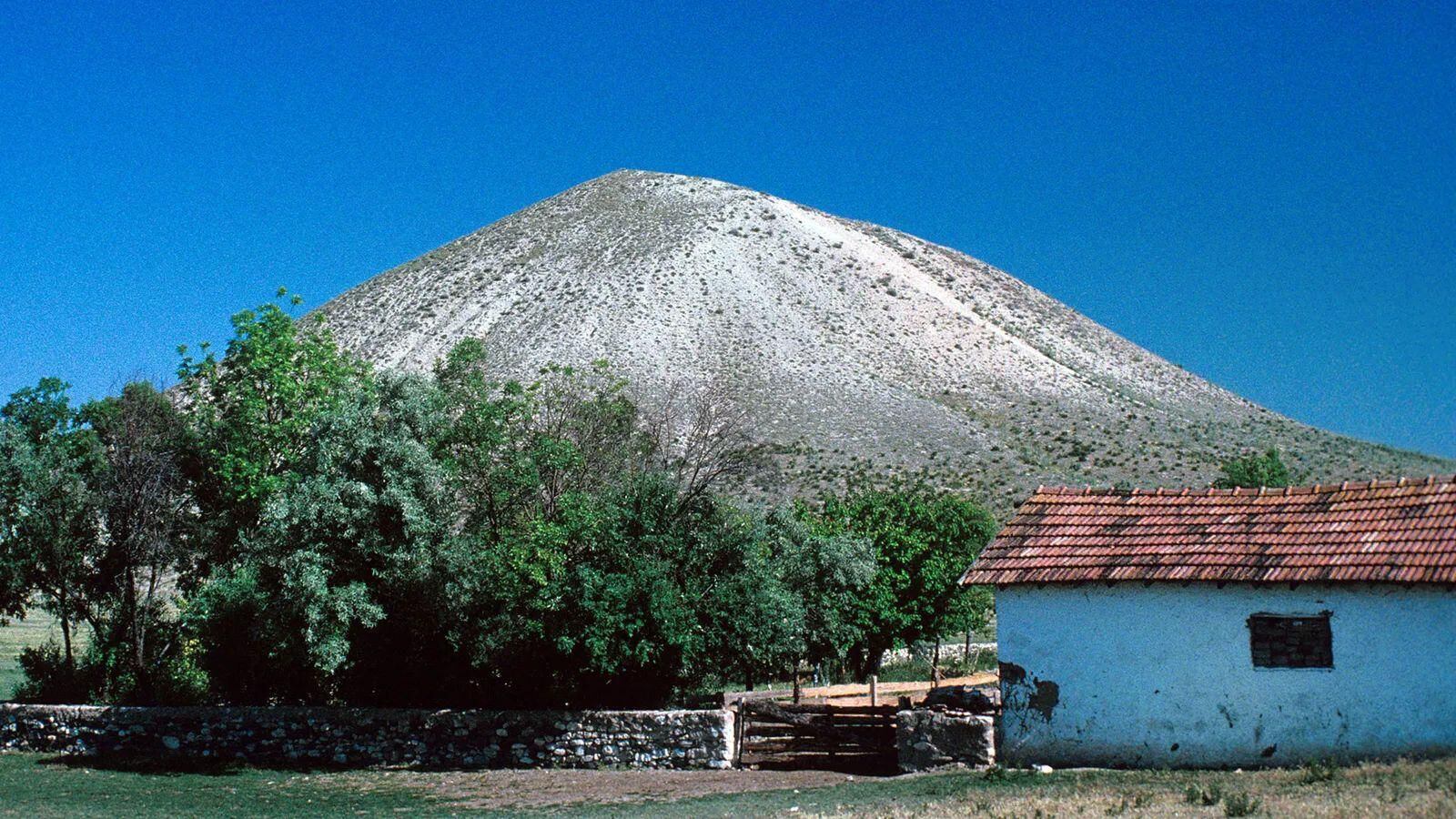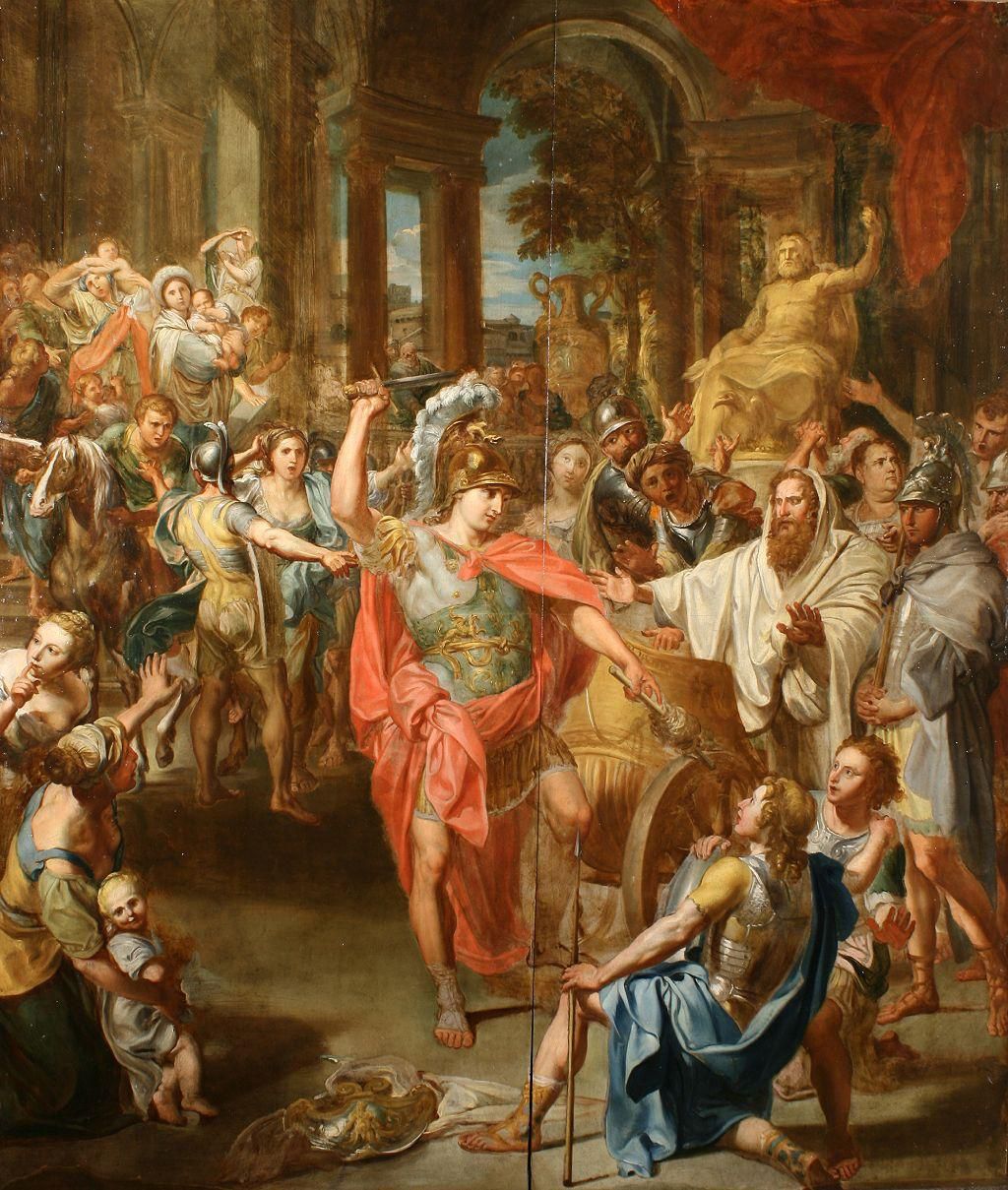Who visits Türkiye They are always captivated by its magnificent historical sites.
From the imposing columns of the Library of Celsus in Ephesus to the colossal heads of Mount Nemrut, the country nearly collapsed under the weight of its historical splendor.
LOOK: Jasper Maskelyne, the British magician behind the ingenious deceptions that helped defeat the Nazis in Africa
But there is one ancient city (recently crowned as Turkey’s 20th UNESCO World Heritage Site) that announces its importance with much less fanfare.
His name is Gordiusthe ancient capital of the Iron Age kingdom of Phrygia and is at least 4,500 years old.
Located about 90 kilometers southwest of Ankara on an arid, windswept plain, Gordion looks more like a quarry or the collapsed crater of an extinct volcano than a once-mighty city.
A huge mound, the buried remains of a 135,000 m² citadel, rises gently from the surrounding landscape with a sandy path leading to the top.
From there, it is possible to look at the open excavations and make out the contours of the collapsed walls, marking the remains of old mansions and warehouses like a real estate agent’s blueprint.
Across the horizon, dozens of small mounds dot the fields like giant prehistoric mole holes.
Only the monumental gate, surrounded by huge stone walls 10 meters high, gives evidence that It was once the capital of one of the greatest kingdoms of the Iron Age.
“Many people have never heard of the Phrygians, but between the 9th and 7th centuries BC they dominated Asia Minor, which is now Turkey,” explained Brian Rose, an archeology professor at the University of Pennsylvania who led excavations at Gordion. . since 2007.
“Gordium is located at the intersection of the main east-west trade routes: to the east were the empires of Assyria, Babylon and the Hittites, and to the west were Greece and Lydia. and he became rich and powerful.”
But while the name Phrygia may not be familiar to you, there is one person associated with this city that many may recognize.
Archaeologists believe that Gordium was ruled by the legendary King Midas, “the man with the golden touch.”.
core of truth
Midas is a traditional morality tale: The king did a favor to the god Dionysus and in return he was granted a wish.
Instead of wanting something useful, the greedy monarch asked that everything he touched would turn into gold.
He immediately realized his mistake: the food solidified before he could eat it, and when he hugged his daughter, she turned into a statue.
The moral of the story is well known: be careful what you wish for.
“The story is not literally true,” said professor Lynn Roller of the University of California, Davis, who has studied Gordio since 1979.
“But many myths have a core of historical accuracy, yet they are distorted as they are retold over the centuries.”
But who was Midas and where did the idea of the “golden touch” come from?
To separate fact from fiction, archaeologists first had to prove that King Midas was a real person..
The easiest way to do this was to consult ancient texts.
“A Phrygian king named Midas is mentioned in several ancient sources, including the annals of the Assyrian ruler Sargon II,” Roller explained.
“The Assyrians considered him a powerful king and an important rival in their efforts to expand their territory during the 8th century BC.”
More evidence of Midas’ existence can be found about two hours west of Gordio, in a place called Yazılıkaya, better known as the “City of Midas.”
Rarely visited by tourists, it is a place of spectacular beauty on top of a hill where volcanic formations stand out from the landscape.
It’s filled with ancient caves and tombs, and 3,000-year-old staircases lead to echoing tunnels hand-carved from solid rock.

But the most spectacular of all the monuments here is the temple’s magnificent facade, 17 meters high, carved into a rock wall some 3,000 years ago.
At the top, an inscription in ancient Phrygian reads: “Ates […] dedicated [esto] to Midas, leader of the army and ruler”.
Proof, written in stone, that Midas was a true king, important enough for the powerful local lord Ates to dedicate his temple to him.
“As Midas was a powerful king, it is very likely that he is buried somewhere in Gordium,” said Rose.
“Finding his tomb would be a discovery of enormous importance. And the obvious place to look would be one of the hills surrounding the city.”
Surprise
More than 125 tombs surround Gordium and date from the 9th to the 6th century BC
These gigantic earthworks, which look like alien mounds in a flat landscape, were built to protect the tombs of important people from grave robbers, just like the Egyptian pyramids.
The largest, a steep peak now covered in weeds and yellow grass, is 53 meters high, making it the second highest mountain in Turkey.
Experts estimate that it took 1,000 people and up to two years to build.
“Early archaeologists called it ‘Midas’ Tomb’ because they thought Midas must be buried inside it. But they didn’t know for sure“Rose said.
“They had to be extremely careful digging it up, because it’s just a big pile of compacted dirt. If you do it wrong, the whole thing could collapse on top of you.”
In 1957, working with a team of Turkish coal miners, experts carefully excavated a tunnel to the mound.
Inside, they found a large burial chamber built from pine and juniper trunks, perfectly preserved within its airtight cocoon for almost 3,000 years.

Today, visitors can follow the same excavation tunnel deep into the mound to visit the tomb, the oldest wooden building in the world.
It’s so fragile that it’s now supported by beams and protected by a metal fence, but that doesn’t mean you won’t be speechless when you see that ancient structure that was hidden underground for so long. like a Turkish Pompeii, but almost 800 years older.
The occupant of the tomb was a man of around 60 years old, lying on a bed and surrounded by bronze jugs, decorated bowls and jugs, carved wooden furniture, fragments of fine fabrics and other precious offerings befitting the burial of a king.
But was it Midas?
At the beginning of the first decade of this millennium, Gordio archaeologists turned to dendrochronology (tree ring dating) in search of answers.
But when they analyzed the logs used to build the burial chamber, they found a problem.
“The wood dates back to around 740 BC, but according to Assyrian records, Midas was still alive in 709 BC, 31 years later,” Rose revealed.
“This tomb cannot belong to Midas.”
So who is the man in the tomb?
From the lavish burial, he is clearly a king, but which one?
A legendary knot
The date of your death can only mean one thing.
“He probably died the year Midas came to power,” Rose said.
“Then we are sure he must be Midas’ father, Gordias.”
Like his son, Gordías is also legendary.
The story goes that when the previous king died without an heir, the townspeople asked the oracle for help.
He declared that the next man who entered the city driving an ox cart should be made king..
Moments later, Gordias, a farmer, arrived in the city. He was crowned and the city’s name was changed to Gordio in his honor.

To celebrate, his chariot was displayed in a temple, tied in an elaborate knot: the famous Gordian knot.
Legend said that any man who could untie the knot would rule Asia.
Over the years, many people have tried, but they have all failed.
“We found no evidence of carriage or knot,” Rose said.
“But several ancient Greek historians report that in 333 BC Alexander the Great came here on his way to defeat the Persian army.
“When faced with the knot, he simply drew his sword and cut it.
“Therefore, we believe that the node really existed. And later Alexander conquered large areas of Asia, fulfilling the prophecy.”
But what about the “golden touch”? Where does this idea come from?
Surprisingly, archaeologists haven’t found much gold among the 40,000 artifacts discovered so far in Gordio: some jewelry, some gold coins and an exquisitely gilded sculpture of a sphinx.
If there was gold in the city, it may have been looted over the centuries, or perhaps it is still hidden in the 85 yet-to-be-excavated tombs.
But archaeologists have another theory about the origin of the myth.
“We think it’s a metaphor,” Roller explained.
“Under Midas, Gordius became rich and powerful. The story became a metaphor for a person of great wealth.
“To this day, when we say someone has the ‘golden touch,’ we mean a person who achieves wealth or success easily.
“King Midas seems to have had this gift”.
* If you want to read the original note in English, Click here
Source: Elcomercio
I am Jack Morton and I work in 24 News Recorder. I mostly cover world news and I have also authored 24 news recorder. I find this work highly interesting and it allows me to keep up with current events happening around the world.

:quality(75)/cloudfront-us-east-1.images.arcpublishing.com/elcomercio/OSMJUMXGEZHQLDDQEHTII2XPMU.jpg)





